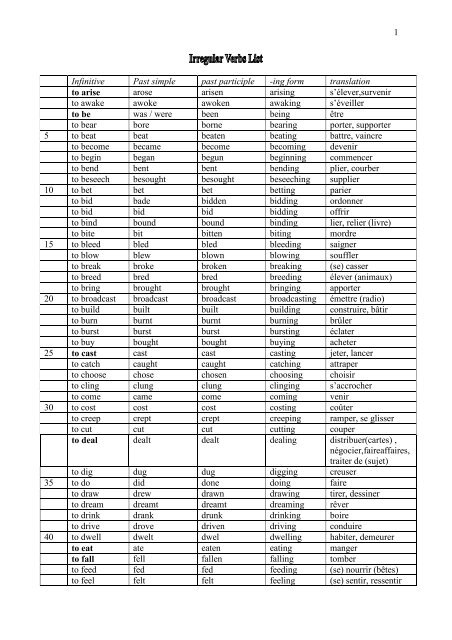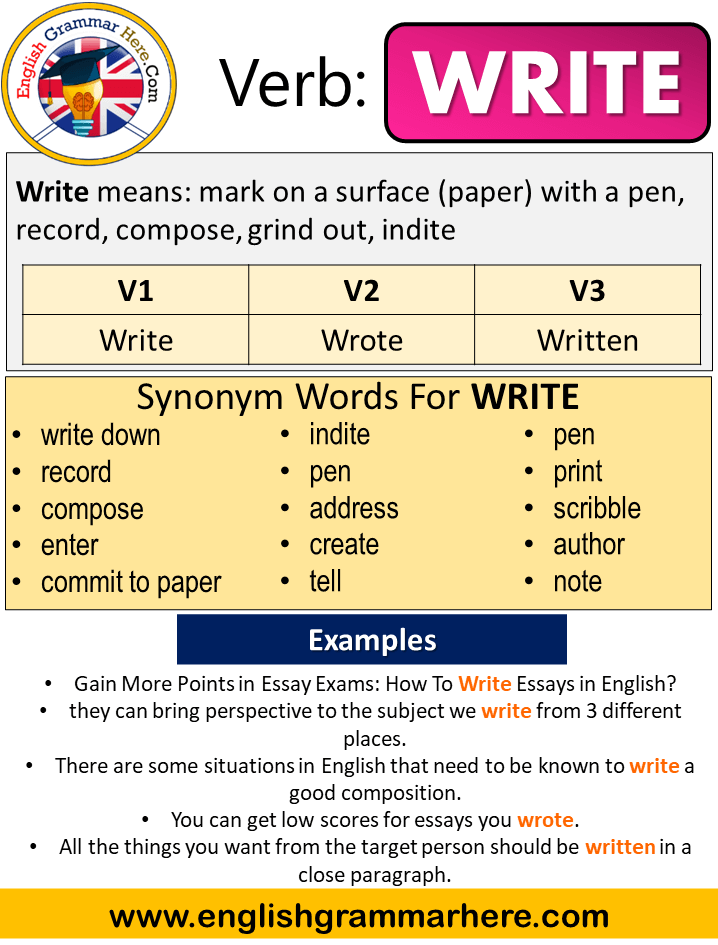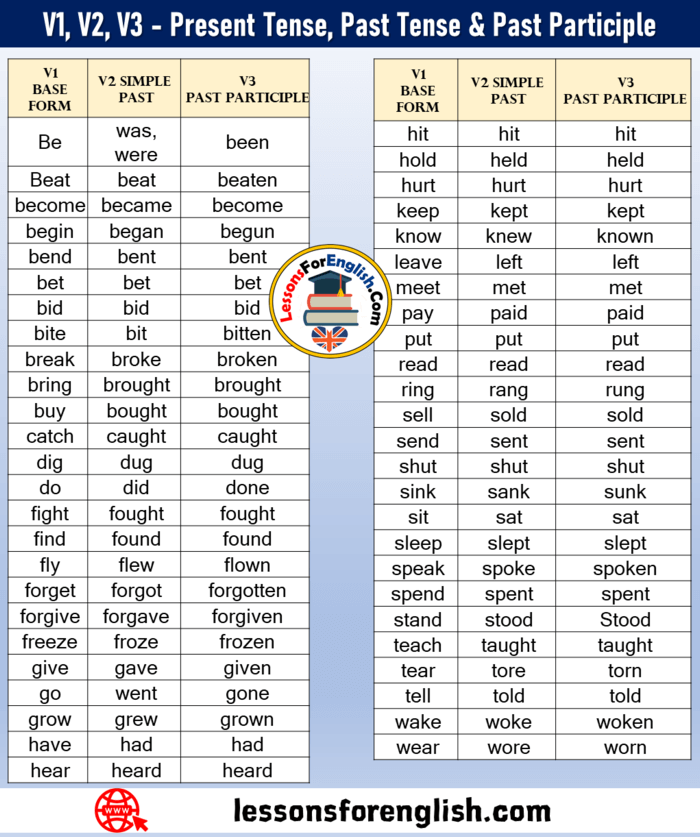

Many irregular past participles end in -en, but, similarly to the past tense, they can also end in -t, -ck, -d, -e, -g, or -ght. For example, many irregular past participles require you to add an -en, -n, or -ne ending ( drive → drive n). However, the vowel or ending is often (but not always) different from the past tense form. Just like the irregular past tense, irregular past participles can be formed by changing a vowel, adding a new ending, or doing both. Often, when the base ends in -ck, -e, -g, -ght, or -n, the past tense will keep that final letter or set of letters. Sometimes you'll add -d ( sell → sol d) or -ght ( catch → cau ght) instead.

One of the most common irregular past tense endings is -t ( sweep → swep t). Eat, for example, turns into at e in the past tense. Other verbs require you to change a vowel and add a new ending. The verb dr ive, for example, changes to dr ove in the past tense. With the irregular past tense, it is common for a vowel in the middle of the verb to change instead of the verb's ending. Let's take a closer look at how the irregular past tense and past participles are formed. You'll learn more about this concept later in this lesson.

Some examples are at e, fough t, swa m, and give n. They all have one important characteristic in common: they almost never end in -ed.Here are a few basics you'll want to remember about the irregular past tense and past participle forms. Let’s see if you’ve mastered the contents of this class.Irregular Past Tense and Past Participles
Past participle how to#
Now, discover when and how to use all Italian past tenses! Non ho potuto dirglielo perché era andato via. ( I couldn’t tell him because he went away)Ĭome hanno saputo del vostro divorzio? ( How did they know about your divorce?) Oggi devi fare quello che non hai voluto fare ieri. ( Today you must do what you didn’t want to do yesterday) Ha dovuto lasciare il lavoro per dei litigi. ( He had to leave his job for some fights) The past participle of the modal verbs is:

Leopardi ha scritto «A Silvia». ( Leopardi wrote “A Silvia”) MODAL VERBS Ti ha chiesto gli orari del treno? ( Did he ask you the train timings?) Ieri sera abbiamo bevuto un cocktail ai lamponi davvero eccezionale! ( Yesterday evening we drank a raspberry cocktail which was exceptional!) Hai detto una cosa che mi ha ferita molto ( You said something that hurt me) However, the past participle is very irregular! Here you are a list with the most frequent verbs having an irregular past participle… accendere Ieri abbiamo mangiato la lasagna, che buona! Poi nel pomeriggio siamo partit i per gli Stati Uniti. ( Yesterday we had lasagna, how delicious it was! Then in the afternoon we left for the USA) The same happens to the other verbs (according to their auxiliaries): MANGI ARE When the auxiliary is “essere”, the past participle always agrees in gender and number with the subject → Laura è stat a brava, invece Paolo e Luca sono stat i cattivi ( Laura behaved well, while Paolo and Luca behaved badly) Sono i giocattoli che i bambini hanno avuto a Natale. ( These are the toys the children received for Christmas) Stamattina siamo stati dal dentista. ( This morning we went to the dentist) Now, let’s see how to form the passato prossimo of the auxiliaries: ESSERE The past participle of the verbs in -I RE is formed by adding the ending -i to. Example: conosc ere → conosci uto (here before the ending -uto we put an “i” just for the sound) The past participle of the verbs in -E RE is formed by adding the ending -uto. The past participle of the verbs in – AREis formed by adding the ending – ato. The past participle of the verb “ avere “ is → avuto The past participle of the verb “ essere“ is → stato The past participle of a verb is very important to form its compound tenses (included passato prossimo). Still doubts about “essere” and “avere” and how to use them as auxiliaries? Watch our lesson! Present indicative of the auxiliary ( essere or avere) + Past participle of the verb The passato prossimo is an indicative tense that expresses the past and, differently from the imperfect indicative, it is a compound tense. Let’s find out how to form it: The indicative is the most common and frequent verbal mood and it is used to indicate a fact, an action or an idea that are real, certain and objective. Find out how to form passato prossimo and past participle in Italian! In this video-lesson you will find all the endings, the rules, the modal verbs, the auxiliaries and… obviously even the irregular verbs!


 0 kommentar(er)
0 kommentar(er)
